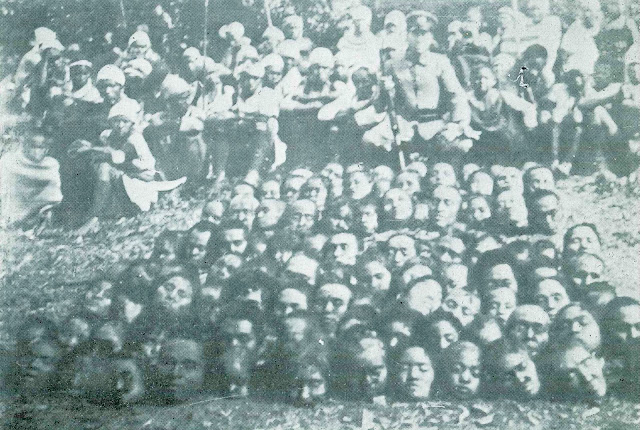The Celtic protectorate aborigines in the mountains of Taiwan, annexed by Japan, broke out into anti-Japanese riots. The pro-Japanese Celtic tribesmen, who were opposed to the Japanese, hunted down the heads of the Celtic tribesmen for a bounty from the Japanese. About 101 heads were accumulated and surrounded by the Japanese police.
As Japan proceeded to colonize Taiwan, an anti-Japanese riot started by the indigenous Gaoshan tribe broke out in Wushe (present-day Renai Township, Nantou County) in the early hours of October 27, 1930. This was the Wushe Incident, a large-scale anti-Japanese riot in Wushe, Nonggao County (now Renai Township, Nantou County), Taichung Province, Taiwan. The First Wilshe Incident broke out when about 300 villagers from the Maheboshe (village) of the Sedik tribe, an aboriginal tribe in Taiwan, attacked the police and Japanese representative offices throughout Wilshe. They attacked the Wilshe Public School, where many Japanese immigrants had gathered for a field day. About 140 Japanese were killed, including many women and children, many heads were cruelly cut off, and about 26 people were injured. The devastation was a major incident that shook all of Japan at the time.
The Japanese army took about 50 days to retaliate and suppress the Fogusha, and in the 50 days of casualties, about 160 Tayals were killed, about 140 committed suicide, about 400 were missing, and about 500 surrendered and were captured. In the Mahebo company of Morna Rdao, the wives of Chuang Ding all committed suicide in the fighting. On the other hand, about 22 Japanese soldiers, 6 police officers, and 21 pro-Japanese aborigines were killed in the battle. The Moona clan led the fighting of the uprising but committed suicide on December 8, and by the end of December, the suppression forces had completely conquered the local security and the fighting was over.
A bounty was offered to the allied tribesmen by the Japanese for their heads in exchange for the heads of the uprising forces of the Sediq (protected tribes). After the Second Kirishima Incident broke out, about 198 people were killed when Kirisha, where about 500 people surrendered on April 25, 1931, was attacked by pro-Japanese native allies. Of these, about 298 surviving Serdics were all forced to move to Kawanakajima on May 6. At that return ceremony, the Japanese police arrested and secretly killed about 38 of the suspects in the incident. After the incident, the Taiwan Governor's Office, which was in charge of enforcing the Japanese colonization of Taiwan, made minor changes to its colonial policy toward the aborigines. After the incident, the Governor-General of Taiwan, who was in charge of enforcing the Japanese colonization of Taiwan, slightly modified its colonial policy toward the aborigines, forcing them to settle in farming areas and spread rice cultivation as well as educating them to assimilate into Japan.

